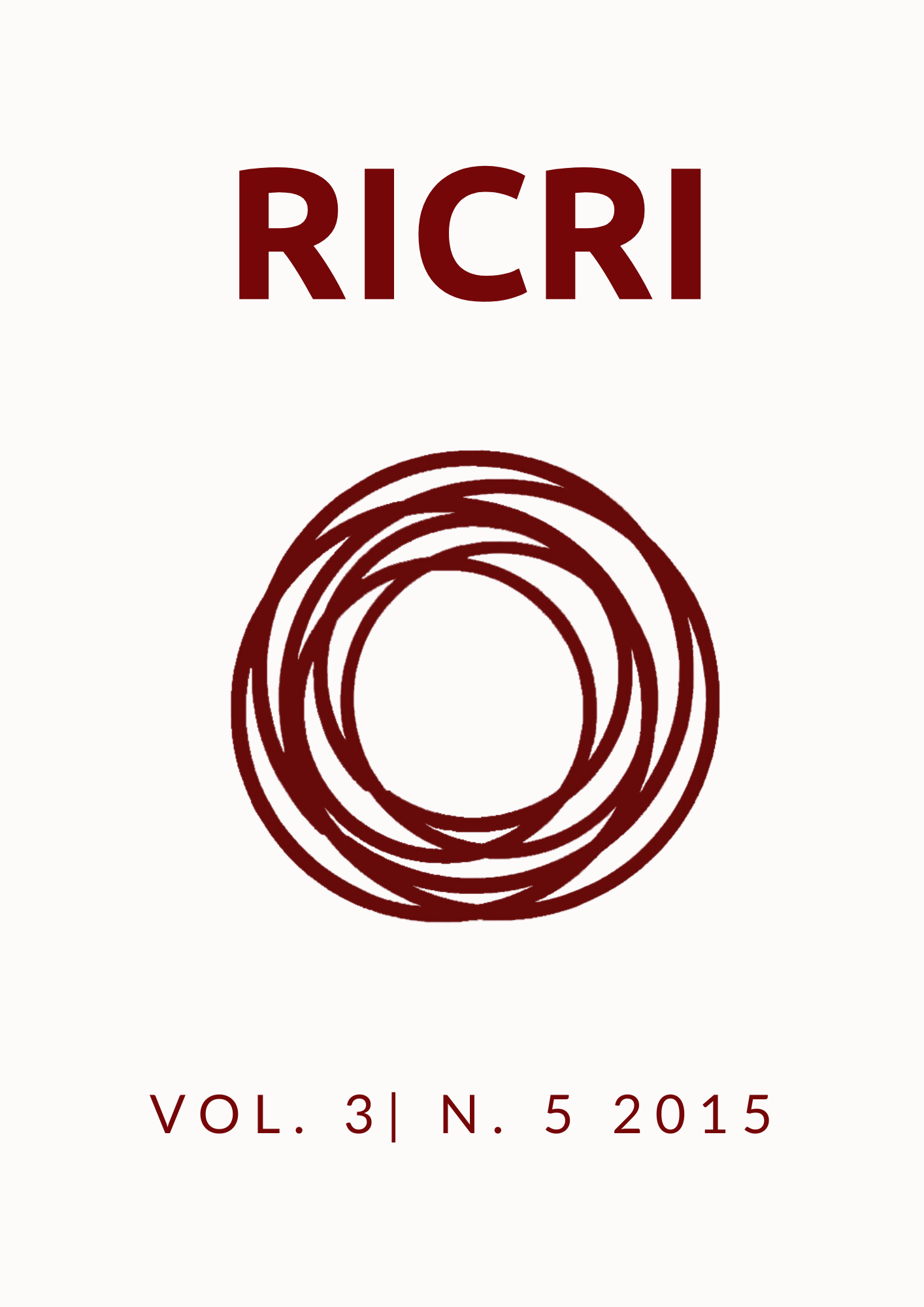Violência e ameaças à paz na América do Sul: um estudo de caso do Equador e Peru (2006 – 2013)
Abstract
Este trabalho utiliza o aporte teórico de Estudos de Paz para analisar as ameaças à paz e potenciais conflitos no Equador e Peru. Pontes entre as disciplinas de Estudos de Paz e Relações Internacionais são mostradas por uma comparação entre ambas, seguidas de uma breve exposição dos problemas de segurança contemporâneos da América Latina. São feitos os estudos de caso descritivos do Equador e Peru, utilizando dados qualitativos e quantitativos de instituições especializadas no estudo de conflitos, e a conclusão apresenta uma análise do quadro geral. Conclui-se que ambos os países vivenciam crises violentas, caracterizadas por protestos, repressões violentas, crime organizado e grupos armados. “Novas ameaças” de segurança figuram ameaças reais dos países. A crise é pior no Peru, o que oferece risco ao Equador.
Downloads
References
BOULDING, Kenneth E. (1977), “Twelve Friendly Quarrels with Johan Galtung”. Journal of Peace Research, vol. 14, No. 1, pp. 75-86.
BUZAN, Barry; WAEVER, Ole. (2003), Regions and Powers: the structure of international security. Cambridge/New York, Cambridge University Press.
COLLIER, Paul; HOEFFLER, Anke. (2000), “Greed and grievance in civil war”. World Bank Working Paper Series 2000-18, April 26, Washington, DC.
CPR (World Bank's Conflict Prevention and Reconstruction Team). Conflict Analysis Framework (CAF). Social Development Department, World Bank, 2005.
DONADIO, Marcela; TIBILETTI María de la Paz. (2014), Atlas comparativo de la defensa en América Latina y Caribe: edición 2014. Ciudad Autónoma de Buenos Aires, RESDAL.
FEARON, James D. (2005), “Primary Commodity Exports and Civil War”. The Journal of Conflict Resolution, vol. 49, No. 4, pp. 483-507.
FERREIRA, Marcos Alan S. V.; SANT'ANA, Theo R. (2015), “As Bases de Dados para Pesquisas em Paz e Conflitos: funcionalidades, similitudes e diferenças”. Boletim Meridiano 47 vol. 16, No. 149, pp. 20-28.
FFP (The Fund For Peace). (2014), Fragile States Index 2014. Washington: The Fund For Peace.
GALASTRI, L. de Oliveira. (2005), A missão de observadores militares Equador-Peru – MOMEP (1995 – 1999) e a participação do Exército Brasileiro. 144 f. Dissertação (Mestrado em Ciências Políticas) – Departamento de Ciência Política do Instituto de Filosofia e Ciências Humanas, Universidade Estadual de Campinas.
GALTUNG, Johan. (1964), “Editorial”. Journal of Peace Research, No.1, pp. 1-4.
GALTUNG, Johan. (1969), “Violence, Peace, and Peace Research”. Journal of Peace Research, vol. 6, No. 3, pp. 167-191
GALTUNG, Johan. (1990), “Cultural Violence”. Journal of Peace Research, vol. 27, No. 3, pp. 291-305.
GALTUNG, Johan (1996), Peace by Peaceful Means: Peace and Conflict, Development and Civilization. International Peace Research Institute, Oslo.
HØIVIK, Tord. (1977), “The Demography of Structural Violence”. Journal of Peace Research, vol. 14, No. 1, pp. 59-73.
HIIK (2006), Conflict Barometer 2006. Department of Political Science, University of Heidelberg.
HIIK (2007), Conflict Barometer 2007. Department of Political Science, University of Heidelberg.
HIIK (2008), Conflict Barometer 2008. Department of Political Science, University of Heidelberg.
HIIK (2009), Conflict Barometer 2009. Department of Political Science, University of Heidelberg.
HIIK (2010), Conflict Barometer 2010. Department of Political Science, University of Heidelberg.
HIIK (2012), Conflict Barometer 2011. Department of Political Science, University of Heidelberg.
HIIK (2013), Conflict Barometer 2012. Department of Political Science, University of Heidelberg.
HIIK (2014), Conflict Barometer 2013. Department of Political Science, University of Heidelberg.
HOLSTI, K. J. (1995), “War, Peace, and the State of the State”. International Political Science Review/Revue internationale de science politique, vol. 16, No. 4, Dangers of Our Time. Les dangers de notre temps, pp. 319-339.
PETTERSSON, T; WALLENSTEEN, P. (2015), “Armed Conflicts, 1946-2014”. Journal of Peace Research vol.52, No.4, pp. 536-550.
PUREZA , José Manuel e CRAVO, Teresa. (2005), “Margem crítica e legitimação nos estudos para a paz”. Revista Crítica de Ciências Sociais, No. 71, Junho 2005, pp. 5-19.
R Core Team (2015). R: A language and environment for statistical computing. R Foundation for Statistical Computing, Vienna, Austria. URL http://www.R-project.org/.
RICHMOND, Oliver P. (2015), “The Impact of Socio-Economic Inequality on Peacebuilding and State building”. Civil Wars, vol. 16, No. 4, pp. 449-467.
SAINT-PIERRE, Héctor L. (2011) ““Defesa” ou “Segurança”? Reflexões em torno de Conceitos e Ideologias”. Contexto Internacional – vol. 33, No. 2, pp. 407-433.
THEMNÉR, Lotta. (2014), UCDP/PRIO Armed Conflict Dataset Codebook. Uppsala Conflict Data Program (UCDP).
THOMAS, Leonard M. (org.). (2006), Encyclopedia of the developing world. New York, Taylor & Francis Group, LLC.
WIBERG, Håkan. (2005), “Investigação para a Paz: Passado, presente e futuro ”. Revista Crítica de Ciências Sociais, No. 71, Junho 2005, pp. 21-42.
YOUNG, Nigel. (2013), “Concepts of Peace: From 1913 to the Present”. Ethics & International Affairs, 27, No. 2, pp. 157-173.
Downloads
Published
How to Cite
Issue
Section
License
Authors who publish with this journal agree to the following terms:
a. Authors retain copyright and grant the journal right of first publication with the work simultaneously licensed under a Creative Commons Attribution License that allows for sharing of work with acknowledgment of its initial publication in this journal.
b. Authors are able to take on additional contracts separately for non-exclusive distribution of the version of the work published in this journal (e.g., post it to an institutional repository or as a book), with an acknowledgment of its initial publication in this journal.
c. Authors are permitted and encouraged to post their work online ( eg, in institutional repositories or on their website) at any point before or during the submission process, as it can lead to productive exchanges , as well as increase the impact and citation of published work ( See the Effect of Open Access).




